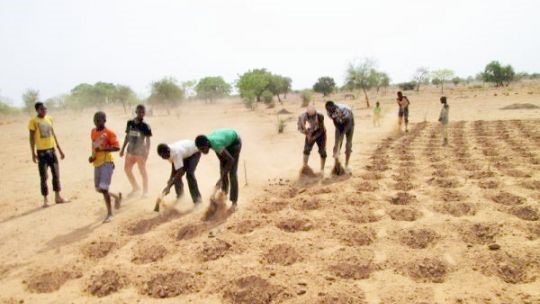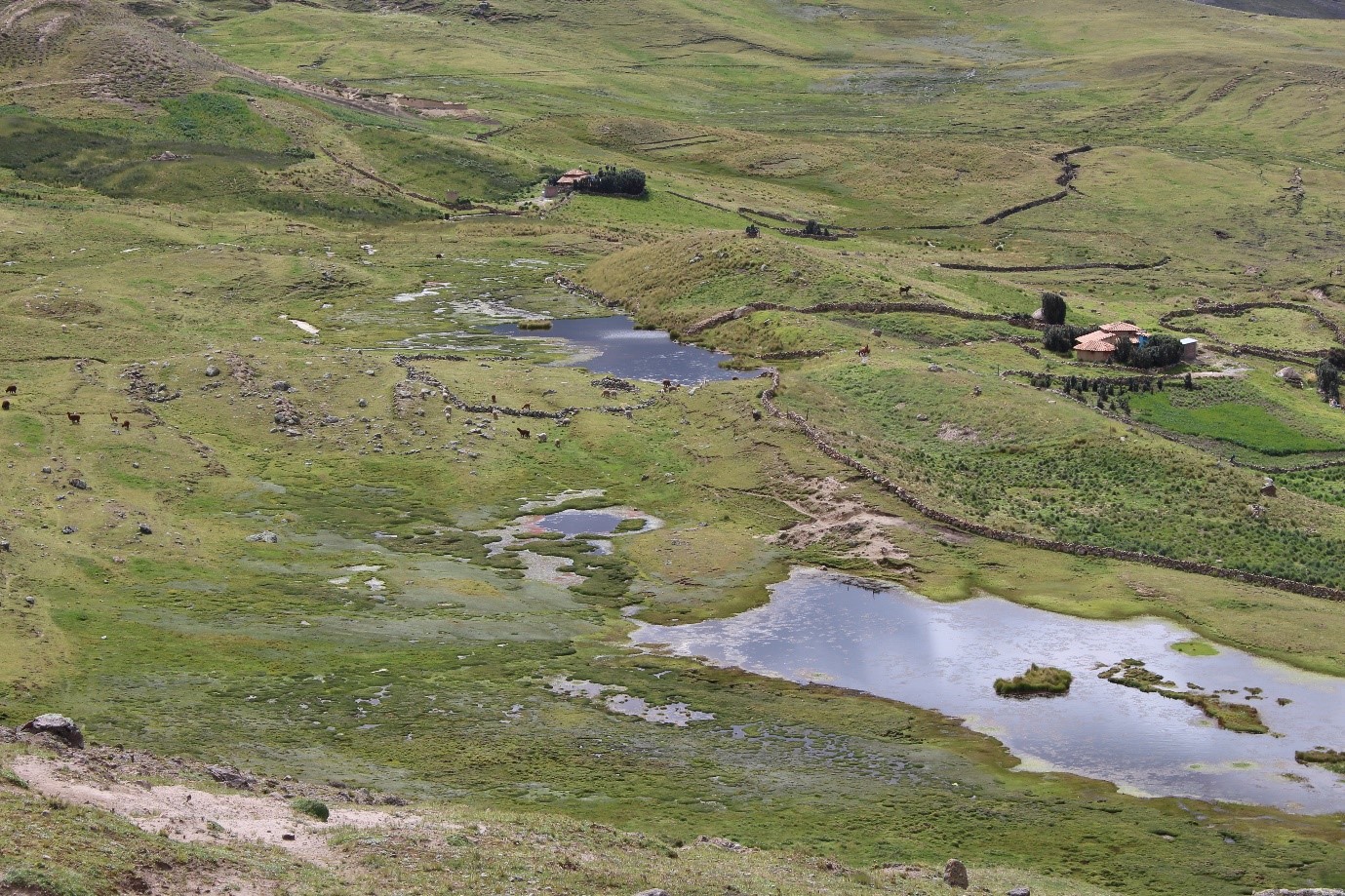
water on farms (image © IUCN)
The upland region of Ayacucho in Peru, the Central Plateau of Burkina Faso, and the state of Rajasthan in India have many differences. They span three continents, differ in altitude, and have different trajectories of development due variously to post-colonialism or civil strife.
However, they also have many things in common, particularly related to attempts to integrate nature-based solutions with ‘hard’ engineering to improve water management. It is this comparative water management element that is the subject of a new paper.
To quote the Abstract of the paper: “Hybridisation of ‘green’ and engineered infrastructure, informed by protecting or restoring catchment processes, can resolve interconnected demands on catchment ecosystems, potentially also reversing historic degradation of socio-ecological systems. Pressures are acute in water-scarce, developing regions with episodic rainfall, exacerbated by historic presumptions favouring engineered management. Comparing conditions, histories and emerging approaches in contrasting regions – the Central Plateau of Burkina Faso, Rajasthan State (India) and Ayacucho Region (Peru) – reveals similar yet distinct approaches reflecting different starting regimes. Transferrable learning about hybridising localised, nature-based solutions and engineered technology informs the necessary transition towards a sustainable approach in these and other regions”.
All three regions have a rich history of locally adapted water retention features, nuanced to local geography and culture, including:
- zaï (small planting pits), bas-fonds (detention and storage of surface flow in naturally low-lying areas) and retenues d’eau (small reservoirs) in Burkina Faso;
- bofedales (naturally occurring depressions in the flat, treeless uplands, many increased in size and connected by people over thousands of years) and qochas (small-scale water storage basins developed for local use) in Ayacucho, Peru; and
- the wide diversity of water capture, storage and access methods in Rajasthan covered in prior IWSN blogposts (see here and here, for example) and summarized in the book Wise Water Solutions in Rajasthan.

centuries for human use (image © Dr Raul Loayza-Muro)
Also, in all three comparative regions, there is intensification of mechanised water management, often favouring diversion to more economically and politically powerful users (particularly cities but also industry and large-scale irrigation). This is occurring in the face of growing recognition that there are close interdependencies between foundational ecosystem processes and nature-based approaches that store and purify water upstream in catchments, and the replenishment of dams and other diversion schemes serving intensive users downstream. All three regions are in a dynamic state of change, much of this shaped by their political histories.
The authors conclude:
- There is growing recognition of the need to integrate localised, nature-based approaches with mechanised water extraction as a basis for water security, manifesting to differing degrees and using different legislative, financial and management approaches between the three study regions. For this, a catchment-scale approach is required, ecosystem processes necessarily informing technology assessment, deployment and management, and the integration of different nature-based and mechanised solutions to work in greater synergy with each other and with catchment-scale processes.
- Hybridisation of ‘green’ and ‘grey’ engineered infrastructure informed by protecting or restoring catchment processes can simultaneously serve the disparate but interconnected demands of rural and urban communities by focusing on the viability of their common supportive ecosystems.
- Reform of regulatory regimes, including financial instruments (both deterrents and inducements such as under ‘payment for ecosystem services’ schemes), have important roles to play in driving progress towards the sustainability of catchment-scale processes and resources.
- Learning from this study is transferable to these and other arid and semi-arid regions facing similar challenges.
- Further research is required to quantify interdependencies and potential synergies between different management approaches and how they can be integrated to fully mitigate externalities from technology choice. For this, the future infrastructure model needs also to be informed by systemic perspectives, rather than simply maximising short-term exploitation of water, with a systemic approach to long-term social, economic and ecosystem viability and equity.
***
The full reference for the paper is: Everard, M., Loayza Muro, R., Bunclark, L. and Taboada, R. Comparative analysis of hybridised solutions to water resources management in Burkina Faso, India and Peru. International Journal of Water Resources Development. DOI: https://doi.org/10.1080/07900627.2020.1712192.
